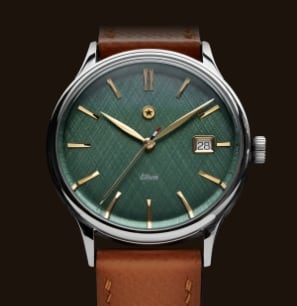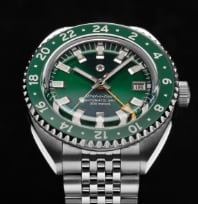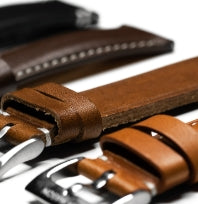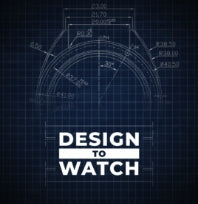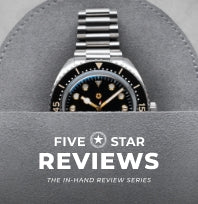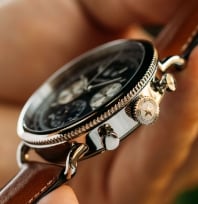The wristwatch is one of those classic accessories that has been highly sought since its inception for both its stylishness and its usefulness. Being able to tell the time by glancing at one’s wrist is a technological marvel that many people take for granted these days—it’s easy to forget that such an action was barely possible a hundred years ago.
Today’s wristwatches can do a lot more than tell the time—and that’s especially evident in the existence of the chronograph watch.
Used by professionals at the top of their game, chronograph watches enable their wearers to make precise measurements in moments. Read on to see how chronometer watches can help make every second count.
What Is A Chronograph Watch?
A chronograph watch is a specialized watch that features multiple stopwatch functions in addition to the traditional watch display. But its uses are many and have been utilized in a variety of ways since its groundbreaking creation.
History Of The Chronograph Watch
The word “chronograph” is a combination of the Greek words “chronos” (time) and “graph” (writer)—so the literal translation of the word means “time writer.” This is because the first chronographs functioned by dropping ink onto a numbered wheel made of paper, allowing the user to measure an object’s distance traveled over a specific period of time.
The first chronograph was invented by Louis Moinet in 1816—he used the stopwatch to track the movement of stars in the night sky. The chronograph became more widely available a few years later, when King Louis XVIII requested that watchmaker Nicolas Mathieu Rieussec create a watch that would allow him to time horse races.
Chronographs wouldn’t be added as a feature on wristwatches until several decades later, in 1913, when Swiss watchmaker Longines created the first chronograph wristwatch. Like its predecessor, the Longines chronograph was designed to give its users an edge when betting on horse races.
As time went on, chronograph usage extended far beyond the racetrack—even helping British troops escape from a German prisoner-of-war camp in World War II. British corporal Clive James Nutting ordered a stainless steel Rolex Oyster Chronograph to be delivered to Stalag Luft III, where he was being held captive. Upon receipt of his new watch, Nutting began to time and track the movements of German soldiers on patrol; in doing so, he was able to plot an escape—an escape that would inspire the Steve McQueen film The Great Escape.
Houston, We Have A Chronograph
The chronograph hasn’t just rescued people from Nazi POW camps; a century and a half after Louis Moinet invented the chronograph to help his observations of objects in outer space, astronauts on the disastrous Apollo 13 mission used a chronograph to get back to Earth safely. Coming up against hardships never experienced by prior spaceflight crews, the team onboard the Lunar Module had veered off-course. At the angle they were approaching Earth, they would be bounced back into space, unable to be recovered.
Knowing that he had a small window of time to operate in and a tiny amount of fuel left, Flight Commander James A. Lovell needed to precisely time a 14-second burn of fuel to correct the course of the Lunar Module. But due to the numerous complications during the mission, the crew had been forced to turn off most of the power on the module—so the onboard clock was not working.
Thinking quickly, Lovell used his Omega Speedmaster chronograph to time the precision operation, using the planet’s horizon to guide the maneuver. Lovell, his team, and the chronograph watch all made it safely back to the planet’s surface, and the rest is history (and the plot of a blockbuster movie).
After the Apollo 13 astronaut’s safe and successful return to Earth, the popularity of the chronograph watch exploded, and the specialized timepieces are still prized to this day.
Who Uses Chronograph Watches?
The uses of chronographs aren’t limited to outer space travel or betting at the racetrack. Because a chronograph watch can be used for precision timing and measuring distance traveled over a period of time, these watches are very popular among competitive drivers and airline pilots, both of whom need to keep track of their speed and distance traveled at all times for the safety of themselves and others.
Cool Features Of Chronograph Watches
When you begin really looking into chronographs, you’ll find all kinds of cool features like the following.
1. Chronograph/Stopwatch
In addition to the traditional watch face, chronograph watches feature a hand that can be started and stopped to make specific measurements. By using this stopwatch hand in relationship to the tachymeter, you can make quick calculations regarding the distance traveled over a short period of time. While chronograph is the name of the watch, it’s also the name of this stopwatch feature.
Because of this very useful feature, chronograph watches are highly attractive to athletes looking to make adjustments to their training and sports officials who rely on precision timing to make important calls.
2. Specialty Bezels
The bezel is an added component that orbits the face of your watch. The wearer of the watch can rotate the bezel to make different types of measurements, and depending on what the wearer needs the watch for, the bezel might include different features.
Many aviation watches feature a dual-time display complication that can be adjusted by rotating the watch’s bezel.
Some chronographs have pulsometer bezels that enable the wearer of the watch to measure their heart rate—this is especially prevalent in racing watches.
Tachymeters are typically featured on watches that have fixed, non-rotating bezels, but that’s not always the case.
3. Tachymeter
A tachymeter is a type of watch complication used to measure the speed at which the wearer of the watch travels over a set period of time. Complications are simply functions that exist on watches—other than the function of telling time.
The tachymeter is a typical feature on chronograph watches. Not all chronograph watches will necessarily have this feature, but it’s a nice perk to have, especially if you need to use your watch to precisely time anything.
Most tachymeters can make measurements over a period of anywhere from seven to 60 seconds, making it especially useful for making short-term measurements of distance traveled—like if you’re a racecar driver or an airline pilot.
In order to make these measurements, you must apply a basic formula to your tachymeter reading: T=3600/t. In this formula, you’re trying to find T, which is the tachymeter scale value, while t is the elapsed time. The integer of 3600 comes from the 3,600 seconds in an hour. By using this formula, you can determine the speed at which you’re traveling.
4. High-Contrast Dials
Because chronograph watches are often used by top-tier professionals in high-speed situations, like racecar drivers and pilots, there’s a need to check the time and measure one’s speed quickly and efficiently. So high-contrast dials and other details on the watch face are very important—the less time it takes to glance at your wrist, the more time you can keep your eyes on the road or on the skies.
Racing Watches
Since the invention of the chronograph watch, there have been many developments that have been geared specifically toward racecar drivers. Many of the features listed above make the chronograph the chosen watch of competitive drivers, and nowadays, you can find entire lines of racing watches from most high-end watch manufacturers.
At Jack Mason, we feature a variety of racing watches that are designed to be simultaneously modern and classic, ensuring that you can sport a stylish chronograph for years. One such example is our Camber Chronograph, which is inspired by elements of mid-century sports cars—including an eye-catching British racing green dial. The Camber Chronograph also features a Time Module VK63 movement and is water-resistant up to 100 meters, just in case you want to take it swimming after your drive.
Aviation Watches
Chronometer watches commonly find themselves on wrists in cockpits, as well. Commonly called “pilot watches” or “aviation watches,” many styles of chronometer watches have been designed specifically with pilots in mind. Because of the high-precision nature of air travel—and the safety concerns that need to be taken into consideration—aviation watches usually come equipped with all of the features listed above. This allows the wearer of the watch to precisely time every movement and maneuver when on the ground or in the air.
At Jack Mason, we offer a wide assortment of aviation watches—and you don’t need to be a pilot to own one or to appreciate their classic appeal. Our Pursuit Chronograph is just one example, featuring a navy sunray dial, Swiss Super-Luminova® markings for high legibility, and a Miyota OS10 movement.
In Conclusion
You don’t need to be a professional racecar driver or a commercial airline pilot to wear a chronometer watch—nor do you need to perform daily calculations regarding your distance traveled to be able to utilize its many useful features.
While in the past, chronometer watches have been used by top-tier professionals for a variety of specific purposes, today, you can find a chronometer on the wrist of any knowledgeable watch enthusiast.
Whether you desire the precision functionality offered by a chronometer watch or just like the sharp look of its specialty dials and features, there are plenty of timepieces available to suit your needs.
And who knows? Someday you may find yourself on a space shuttle, slowly veering off course on your way back to Earth, and in order to land safely, you may need every single feature available on a chronometer watch.
Sources:
The Omega Speedmaster's 14 Seconds Of Fame | Forbes
History Rebooted: The Chronograph's Inventor is...Louis Moinet! | Forbes
